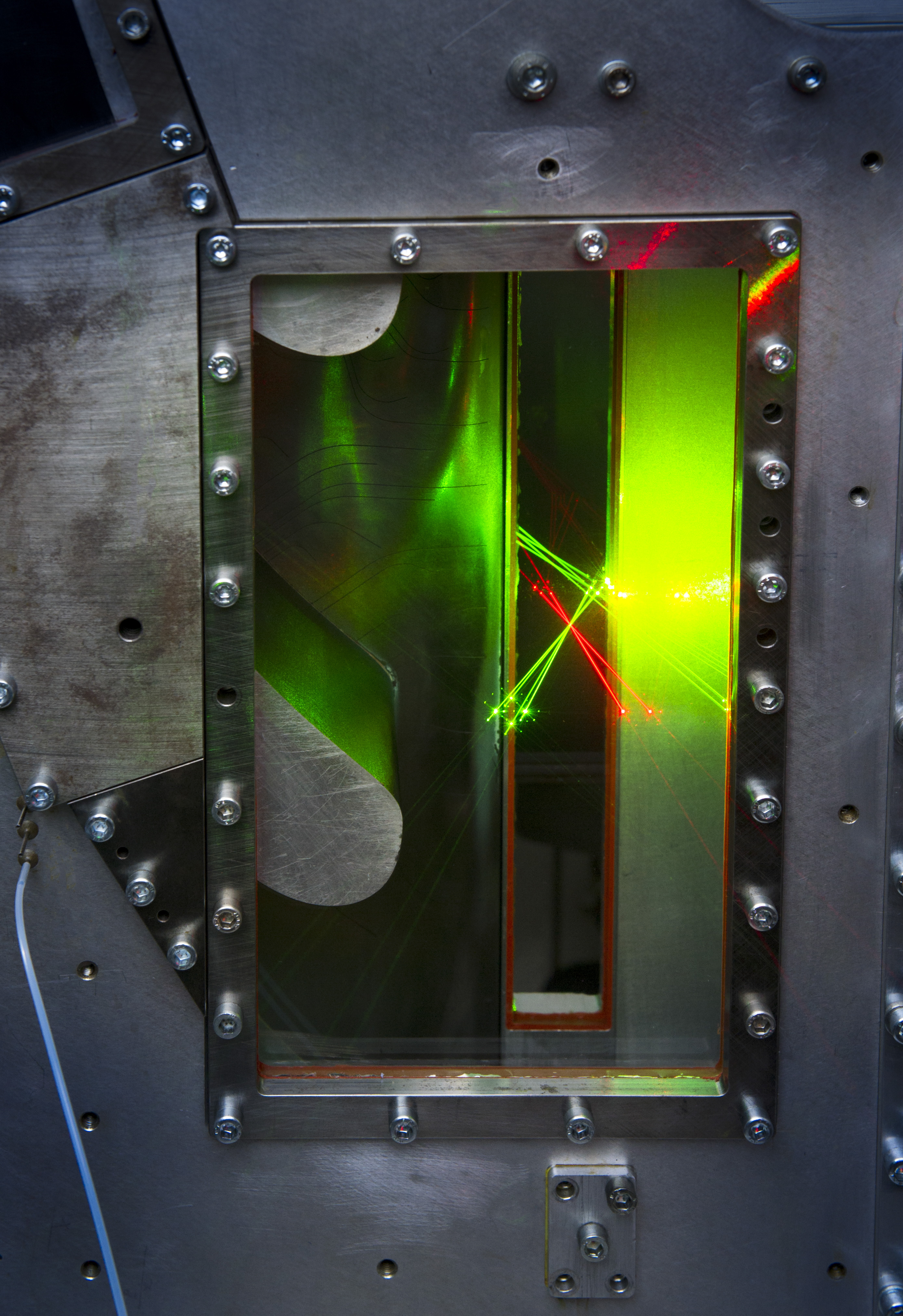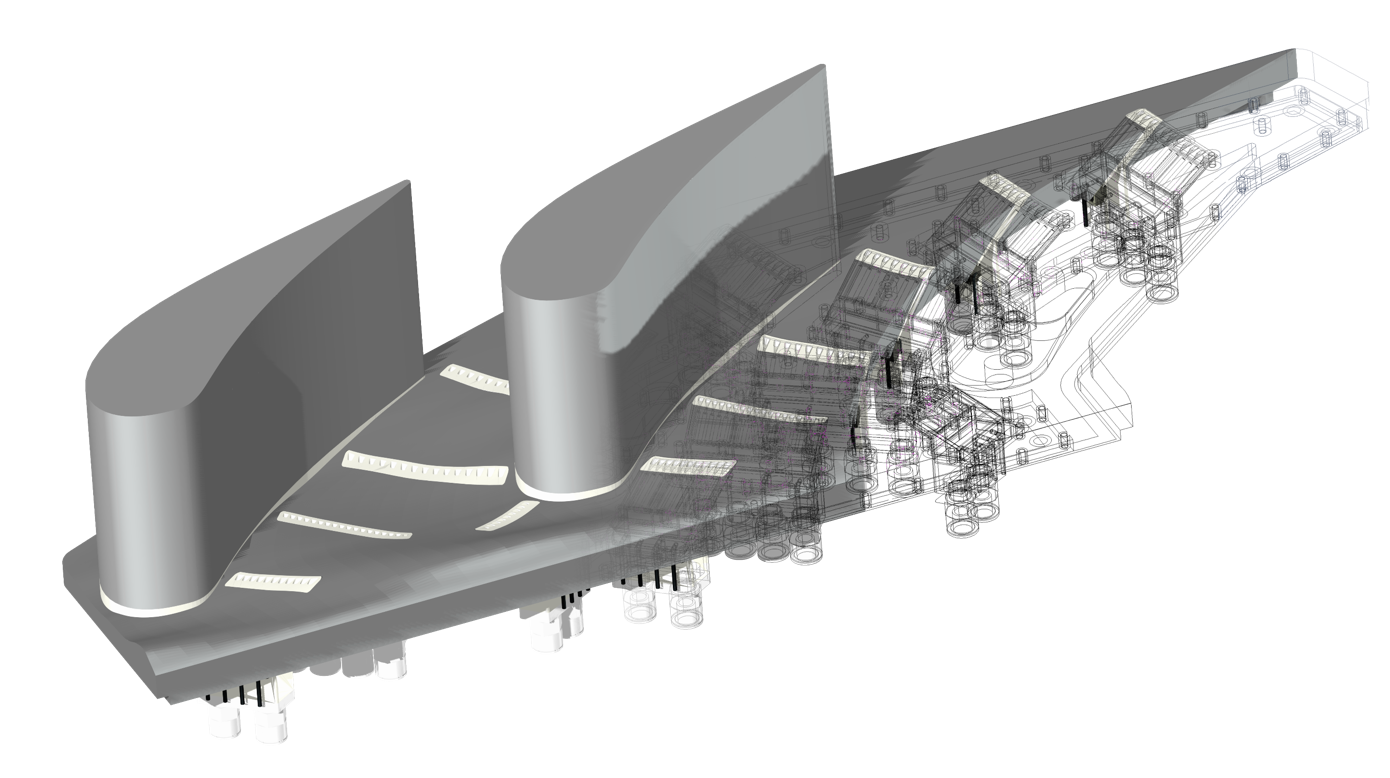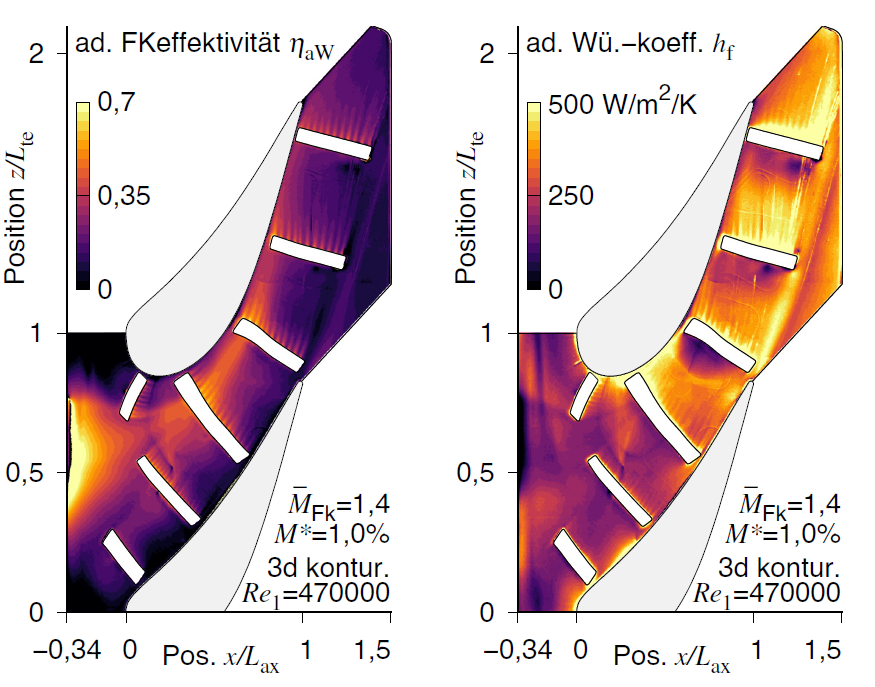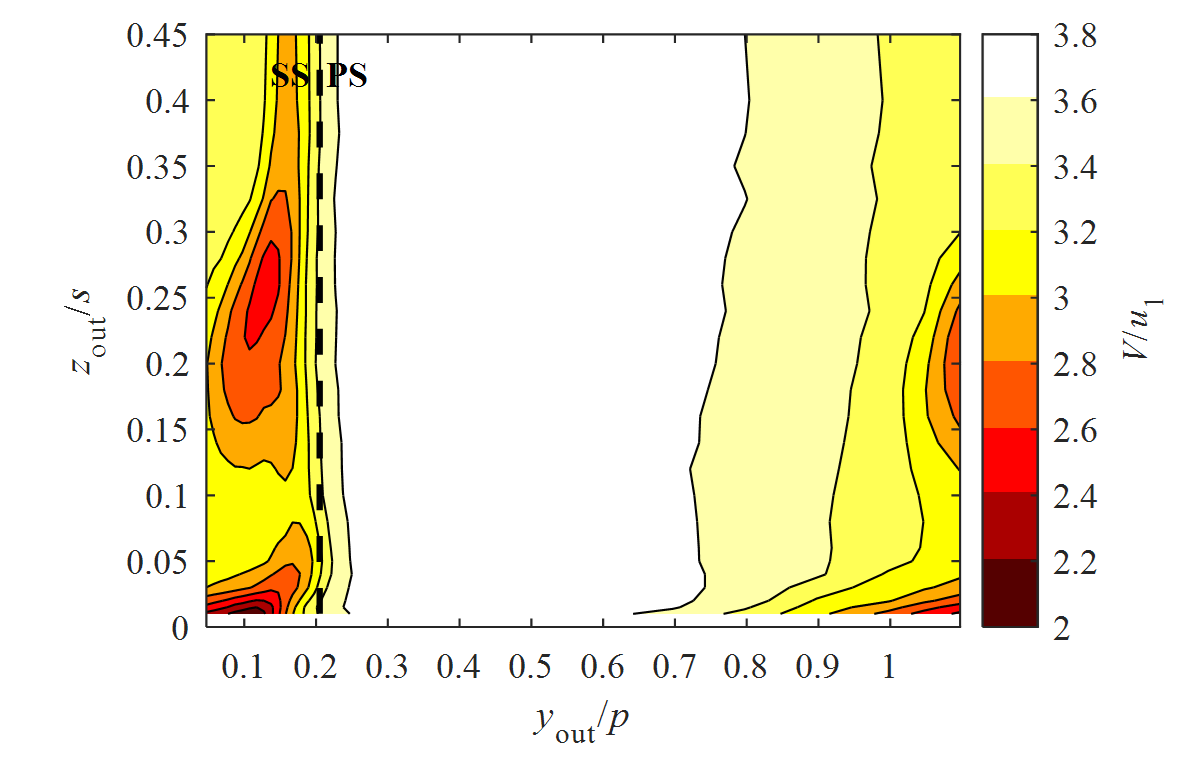Overview
Exhaust emissions from gas turbines have been significantly reduced in recent years through the introduction of new combustion technologies, such as lean premix combustion. However, these technologies lead to much more uniform temperature profiles at the combustion chamber outlet and thus to a significant increase in the thermal load on the blade side walls, particularly in the first turbine guide row.
For this reason, the Institute of Thermal Turbomachinery is conducting tests on a cascade test rig new film cooling concepts for cooling blade sidewalls are therefore being investigated experimentally on a cascade test rig. Due to the complex flow field in a blade passage, aerodynamic investigations are carried out in addition to thermal measurements. Infrared thermography (IRT ) is used to measure the temperature distribution on the blade side wall with high resolution. By applying the superposition principle according to Choe et al [1] and two measurements under different thermal boundary conditions, both the "adiabatic film cooling effectiveness" and the "heat transfer coefficient with film cooling" can be determined with high resolution over a large area. For aerodynamic characterization, laser-optical methods such as laser Doppler anemometry (LDA) are used, which enable spatially and temporally resolved recording of the flow field.
Objectives in the research area of film cooling of blade sidewalls at the ITS
- Development of new methods and concepts for film cooling of blade sidewalls
- Aerodynamic and thermal evaluation of these concepts
- Further development of measurement technology and evaluation methodology for precise and robust determination of film cooling variables
Film cooling variables from measurements using IRT on blade sidewalls
Both the adiabatic film cooling effectiveness (shown on the left) and the heat transfer coefficient with film cooling (shown on the right) are required for the complete evaluation of a film cooling concept. The exemplary results presented by Kneer [2] show these values for a side wall which is cooled on the one hand by a gap blow-out upstream of the blade passage and on the other hand by local cooling air blow-out (film cooling holes in the elements shown in white on the side wall). It can be seen that the initial starting cooling film is "refreshed" by the local blow-out. The heat transfer is very high, especially downstream of the local blow-outs.
Velocity fields from LDA
Using a 3-component LDA, it is possible to record the flow field in a blade passage with spatial and temporal resolution. The experimental setup is shown (left) with the 3 pairs of laser beams crossing at the measuring point. The measurement data (right) show the velocity field downstream of the blade passage (Schmid et al. [3]). These data can be used to analyze the vortex system in a blade passage. In combination with the thermal data, detailed insights into the aero-thermal behavior of a film cooling concept can be obtained.

Sources:
[1] Choe, H., Kays, W. M., and Moffat, R. J., 1974. "The Superposition Approach to Film-Cooling". In Proceedings of ASME Winter Annual Meeting 1974.
[2] Kneer, J. (2017): On the interaction of film cooling and hot gas flow on contoured turbine sidewalls. Dissertation. Karlsruhe Institute of Technology KIT, Karlsruhe. Institute for Thermal Turbomachinery ITS.
[3] Schmid, J.; Schulz, A.; Bauer, H.-J. (2018): Influence of a Non-Axisymmetric Endwall on the Flow Field in a Turbine Passage. High-Resolution LDV. Presented at the ASME Turbo Expo 2018: Turbomachinery Technical Conference and Exposition, June 11-15, 2018, Oslo, Norway. V02BT41A001.




